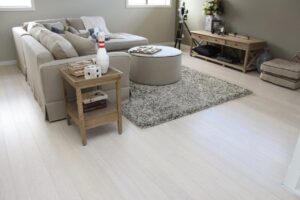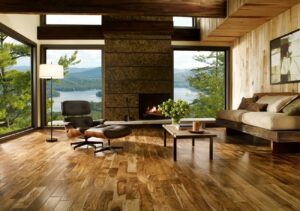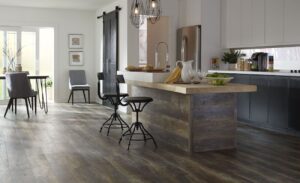When you want to choose vinyl flooring for your home (whether as a part of a remodeling project or you want to build your house from scratches), you should know that there are different types of vinyl flooring out there.
Knowing their different types can give you ideas of what to choose as well as determining the project cost.
Vinyl vs Laminate
A lot of people often compare vinyl and laminate flooring, thinking that they are the same. Well, they are actually quite different.
They share similarities of being the alternative inexpensive options for those who want to enjoy beautiful floor without spending a fortune. However they are quite different with different nature too.
Vinyl flooring is made from 100% synthetic material. The core is made from multi-layer thick PVC vinyl. The base is generally from fiberglass coated in plasticizer and PVC vinyl. And then there is multiple wear layers that are applied.
On the other hand, the laminate flooring has a core from wood byproducts that are bonded with resin. The top layer consists of transparent and hard plastic wear layer.
In short, when you want to have an affordable way to improve the floor, you can use both laminate and vinyl flooring. However, vinyl flooring is sturdier and harder when compared to laminate.
Vinyl floor has better water-resistant and waterproof nature than laminate. When it comes to handling moisture and water, vinyl flooring is better and you can enjoy it without spending a fortune.
Vinyl Flooring Types
When you want to choose the vinyl flooring for your house, there are several different types of vinyl flooring to choose.
Want to choose the ones that look like wood or tile?
Do you want to use natural colors or not?
These options are quite abundant so you should know the right option.
Vinyl Plank Flooring
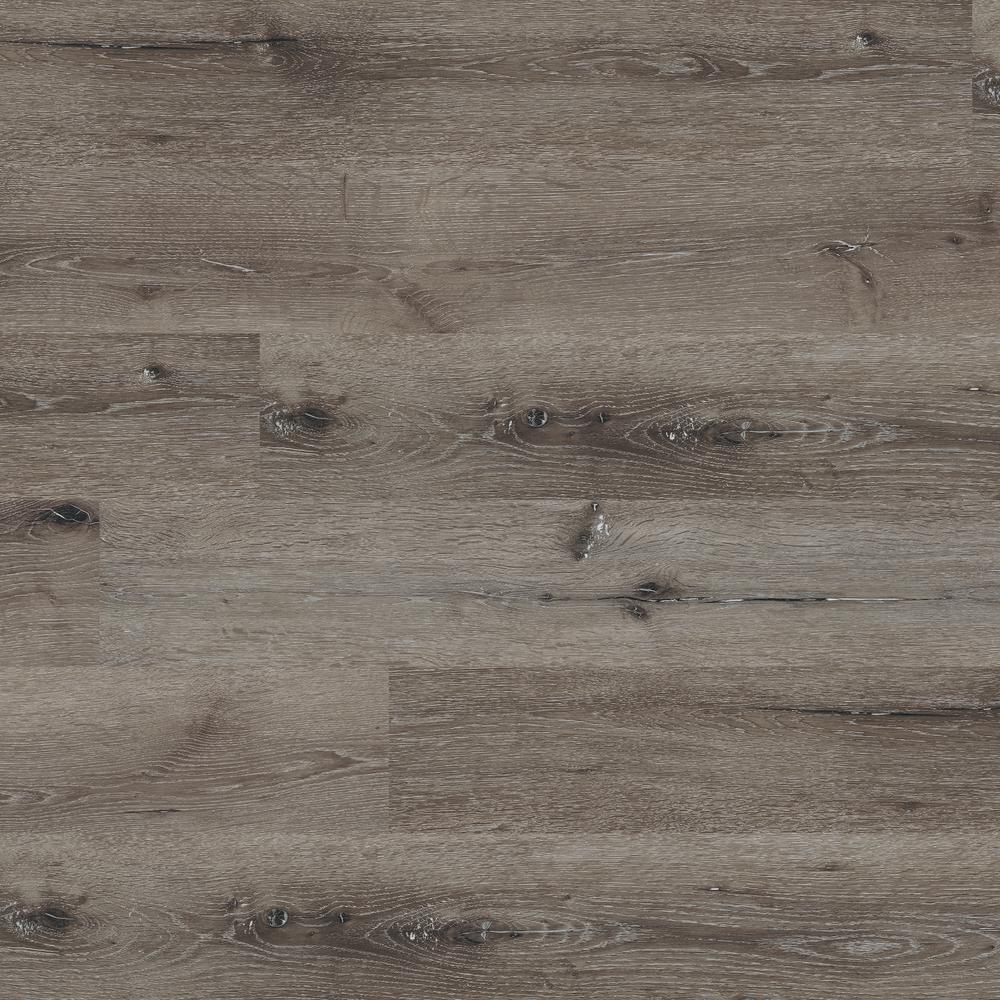
The idea of having the planks is to deliver hardwood look-alike effect without actually spending a fortune. A lot of homeowners want to have hardwood floor and yet they couldn’t really afford it.
So, they turn to vinyl planks that are claimed to have better moisture (and also stain) resistance. The planks are also easier to maintain and care.
You can choose whatever wood textures, colors, and wood species that you like for your home decor. You can also seal the vinyl planks so moisture won’t seep into the floor.
Read Also: Vinyl Tile Flooring Reviews and Pros & Cons for Your Perfect House
Vinyl Tile Flooring
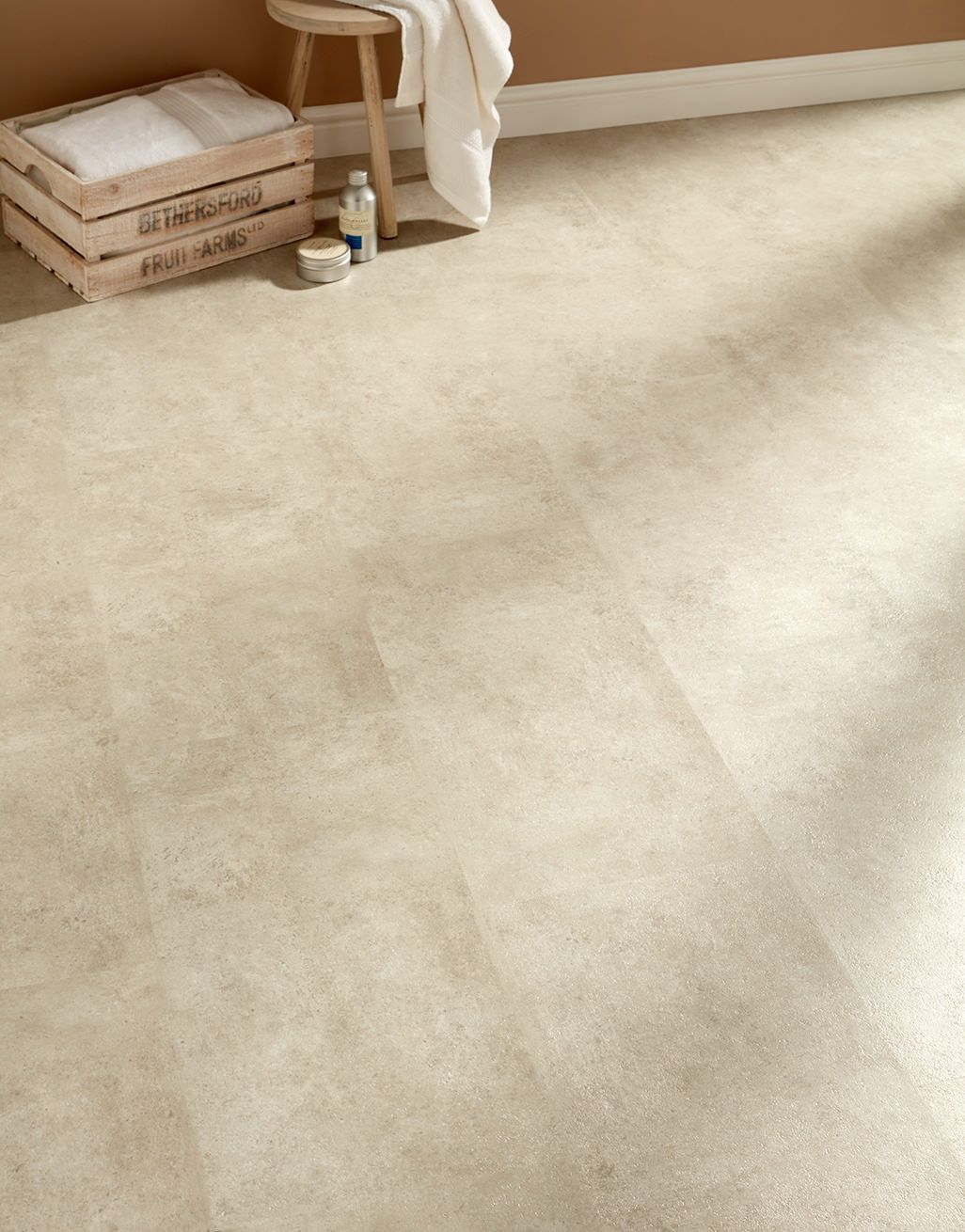
The tile type is often chosen by those who want to do their DIY projects. The tiles are coming as individual squares that can be assembled easily. The final result will look like stone tile and they are coming in different sizes too.
Most people choose it because of the individual construction when one tile is damaged, you only need to replace one tile instead of replacing the entire floor. Feel free to arrange the tiles to create interesting pattern too.
Such a tile usually exists in peel and stick mode although there are other modes available too.
It’s like stickers you only need to carefully place each tile in interesting pattern. If you want to add a realistic visual, considering adding grout as filling between the tiles.
Vinyl Sheet Flooring

This one usually comes in a single roll, generally between 6 feet to 12 feet in width. Like the others, this type of flooring can look like hardwood, tile, or stones, depending on your preference or like.
When compared to other types of flooring, this one is more affordable. The sheet is low maintenance and durable. You can easily install it over wood, underlayment, tile, concrete, or older vinyl.
If you want to enjoy a more durable sheet vinyl flooring, you should pick the inlaid vinyl. It is more durable, thicker, and better in hiding scratches.
But if one section is damaged, you will have to replace the whole floor instead of the damaged section only.
Different Types of Vinyl Flooring
Besides those various types of vinyl flooring, there are also other types that you can consider for your house. You are probably aware with the so-called LVT or Luxury Vinyl Tile.
Such a floor can deliver high level of exclusivity and elegance without compromising your wallet. With this floor, you can achieve greater versatility.
You can improve the look without spending a fortune. Plus, the floor feels both softer and warmer under your feet. When you have to stand long, they won’t tire you or cause discomfort to your feet.
This LVT has solid core for sturdy effect and yet plush surface to support long-period of standing. But this type of flooring is generally pricier.
In terms of visual effect, there are also 2 main types of flooring:
- Printed. The color or the pattern would be directly printed on the surface. This one is mostly popular because it is designed to look like other (expensive) flooring types.
- Inland. Unlike the printed version, the color granules would be embedded to the sheet. As a result, not only the vinyl has a better texture, but it has a deeper visual too. You can find many colors for this inland vinyl flooring.
In terms of wear layer finish, there are 3 different types for the floor. Wear layer is the component that is responsible for the vinyl floor’s strength.
What are those 3 types?
- Grade 1 finish. This flooring has the thickest layer, perfect for high traffic areas, such as offices or public buildings. This type of floor is also perfect for houses with kids or pets
- Grade 2 finish. This flooring is ideal for medium traffic spots and areas
- Grade 3 finish. This one is most idea for the least traffic areas
Most Durable
No matter what kind of vinyl flooring type you choose, the flooring itself is pretty durable and solid. Most people may think that LVT is the best and the most durable because it is the costliest one.
However, vinyl flooring alone is tough and strong when compared to other types of flooring, such as hardwood or laminate. Thanks to its natural waterproof feature, you can even install the floor in the kitchens and bathrooms.
Keep in mind that one of the biggest problems of vinyl flooring is the warping issue. It happens when there is a remaining element left on the floor during the installation. That’s why you need to make sure that the floor is 100% clean during the installation.
With proper and correct installation, your floor can last up to at least 10 years and 20 years, max. Not so bad for an inexpensive and economical flooring, right?
It’s up to you to decide whatever types of vinyl flooring you want. Each type has its own thickness, core type, and such thing alike.
Make sure to do your research thoroughly and take your time. There is no need to hurry. Take as long as you want.
Types Comparison

Here are some comparisons for the different types of vinyl flooring.
When we are talking about vinyl sheet vs tile, the biggest differences lie on the installation options and the choices of design. Because the vinyl sheet comes in forms of rolls, it has a limited installation options and numbers of designs.
Basically, your options for designing the house would be pretty limited. But in terms of cost, the sheet will be cheaper.
The vinyl tile, however, offers a greater flexibility in the installation. You can come up with various configuration and different kinds of style.
What about inlaid vs printed vinyl?
They are mainly different in the construction (production) process. In printed vinyl, a (thin) paper pattern would be placed over the top layer surface of the vinyl flooring. The process isn’t costly so the printed vinyl is considered cheaper too.
In the inlaid vinyl, however, granules are embedded through the wear layer to create optimal color and texture. The process is more complicated and more expensive. That’s why inlaid vinyl flooring is costlier than the printed type.
But in terms of durability (especially for long-term usage), the inlaid type is the winner. Imagine this: You are looking at two paintings, but one is made from oil paint while one is laser print.
You should be able to see the differences in visual and also quality.
Read Also: Vinyl Sheet Flooring Reviews
Final Consideration
Basically, there are several things to consider when choosing the right vinyl flooring for your home. Yes, it is a vinyl flooring but there are different types of vinyl flooring.
Narrowing down your options can be overwhelming if you are clueless about it. You should do your research and find out the basic and general facts about it.
With different sizes and types to choose, make sure that you have planned everything carefully.
For instance, are you going to change the floor in one room only or the entire house?
Are you familiar with the installation?
Do you know how to do it?
Do you know how to calculate and measure the size (and the dimension)?
You should plan all of these things, so this isn’t a project for those who want to rush things. Now that you already know the various types of vinyl flooring, you can start your research and planning.



